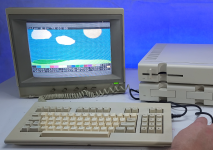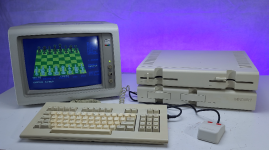falter
Veteran Member
I'm trying to do some video of various machines in action and with my Samsung Galaxy Note 20 Ultra I've been able to eliminate the wave or band effect by setting the frames per second to 1/30 or 1/60. But no matter what I try, I cannot get rid of moire. I'm filming a composite monitor (Apple II color), and nothing in the way of angle changes or such seem to work. Is it just impossible with a cell cam? I've looked around and on youtube and I see people filming with DSLRs with minimal moire. But on mine it's horrific.


